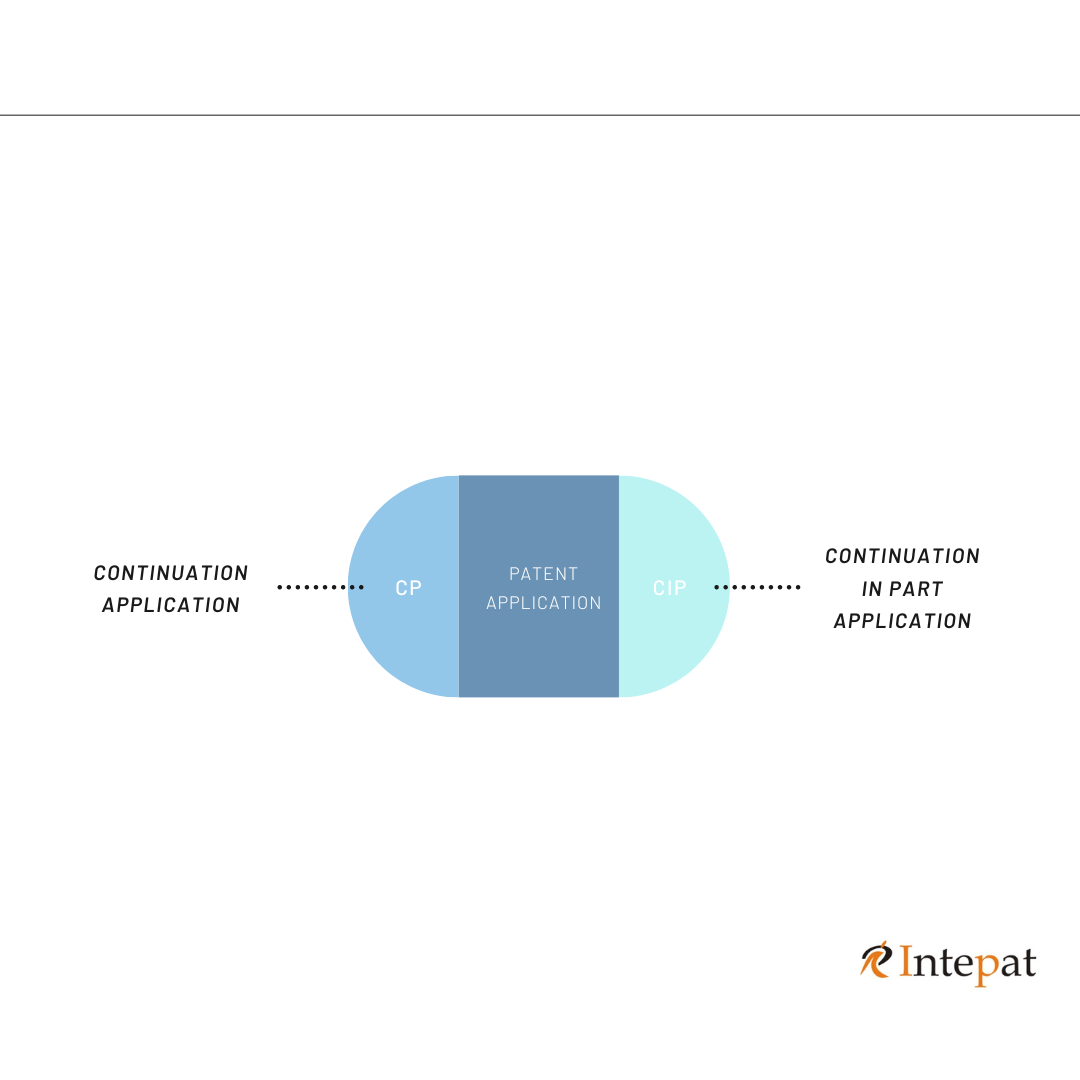You have filed a patent application. But, patenting your invention takes years together. Meanwhile, you may come up with lots of updates and improvements in your invention. Your improvements may not be sufficient to file a new patent but, they might be important enough to your invention. Continuation and continuation in a part application play a vital role in such a scenario.
Continuation Application
A continuation application [CA] is a flexible tool that allows you to add additional claims to the parent patent application. Continuation applications are often referred to as ‘straight continuation’ applications.
We can make use of the continuation application only before the grant or abandon the original patent application. Besides, one can make changes in the claims section only through a continuation patent application. Hence, one has to ensure the modifications do not require the addition of any new content into the actual application. Besides, the new claims must support the actual specifications of the patent.
As lucrative as the priority filing date sounds it may have its drawbacks. One must always remember that no matter how important the CA is, it too will expire with the parent patent. This thereby decreases the duration of the validity of the continuation patent.
Currently, the cost of filing a CA is $800 and $1,600 for small and large entities respectively.
Where to use a continuation application [CA]?
Sometimes you might have designed narrow patent claims to receive the parent patent soon. In such a scenario you can always use a CA to widen your patent claims.
In certain cases, you might have chosen limited claims due to a restriction requirement. Thus, you can file a continuation patent application to file your missed claims.
Inventors use continuation applications to develop a clear defensive and offensive forte around their invention. They may also use a continuation application to create a wave of uncertainty around the final patent scope as a strategy to deter competitors.
Continuation-in-Part Application
Continuation-in-Part (CIP) Applications are often referred to as an ‘add-on’ to your current patent application. It repeats a part of the parent application and also contains added information that is unavailable in the original patent application.
The claims of the CIP type of application that are relevant to the subject matter of the parent application will have the filing date of the parent application. This, in turn, will help the inventor to maintain his first inventor status though, he had added improvements in his invention at a later stage.
Meanwhile, if we introduce a new subject matter in the CIP application, any claim relevant to this subject matter will acquire the filing date of the CIP application only. Though this filing date seems like a drawback, CIP application will Hence, there are different priority dates in a CIP application.
Furthermore, a CIP application combines all old and new improvements which thereby reduces the cost of applying. A CIP will act as a pathway for adding the latest improvements to your original invention.
| Continuation Application | Continuation-in-Part Application |
| They are also called ‘straight continuation application | They are also called ‘add-on’ applications. |
| One can make changes only to the claims section. | One can add subject matter to the application. |
| The application will have the filing date of the parent application. | The application may or may not have the filing date of the parent application. |
Conclusion
The Intellectual property sector offers several opportunities for inventors to update any improvements to their inventions. However, an applicant should be adept while deciding whether to choose a continuation or CIP application to update any latest embodiments. You can always seek the knowledge of patent experts to help you choose the type of application.
Further, you may also be interested in reading the following blog posts:
A Comparative View of Patent of Addition and Divisional Patent Application
An Overview – Patent of Addition
Divisional Patents In Various Jurisdictions




